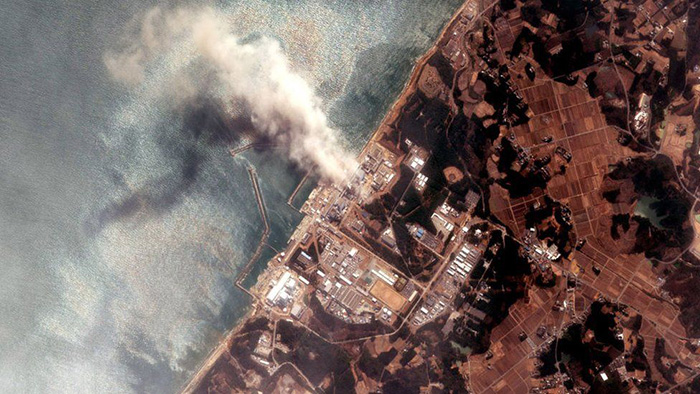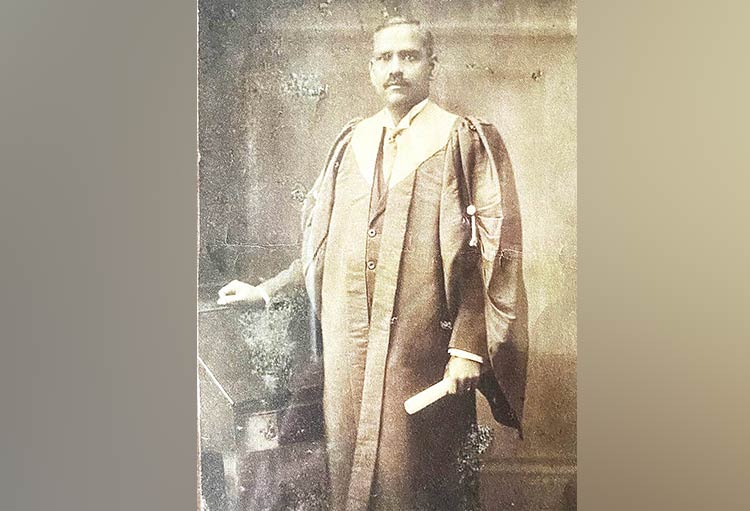Opinion
Plan for setting up nuclear power plants in SL

An open letter to President Ranil Wickremesinghe
Recent articles in the local press have publicised the government plans for introduction of nuclear power plants to Sri Lanka with Russian support. A similar decision was taken way back in 2010, by the then President to bring nuclear power plants to Sri Lanka from South Korea. At the time, the APSL-UK responded to both GOSL and the IAEA Geneva, showing the unsuitability of installing nuclear power in Sri Lanka. This letter is a follow up to that communication from the APSL-UK highlighting the scientific, economic, and social reasons why nuclear power plants are not suitable for Sri Lanka.
(1) Is Nuclear Energy Clean or Renewable?
Nuclear technologists claim nuclear energy as a “Green Energy”. This is correct only during the power production period, but carbon dioxide is emitted during (i) uranium mining and purification, (ii) long years of building the power station with metal and concrete, and (iii) de-commissioning of the power station at the end of its lifetime. It also produces radio-active waste product which requires careful management over thousands of years. Therefore, in total consideration, nuclear energy is “Not a Green Energy”. Definitely it is not also a “Renewable Energy Source” like Solar, Wind and biofuel.
(2) Can Sri Lanka Afford Nuclear Plants?
Building an average nuclear power plant takes about 5-8 years and costs ~2-5 billion US dollars. Mini nuclear power stations may cost less but will be in the same order of magnitude.
In 2022, Sri Lanka was unable to pay back debt that fell due; which resulted in the country being declared bankrupt and the economy contracted by 9.3%. The country has to pay back between 5 – 6 billion dollars each year from 2023 to 2029/30. But so far, the govt has taken no steps to increase the country’s income. Taking on more loans is not in the best interest of the country. Given the public perception of corruption in the country, there is strong reason to believe that this proposal is motivated by the personal benefits that may be accrued by advisors, promoters, politicians and bureaucrats who have their own “selfish” agendas
The UK’s experience with Sellafield nuclear power plant during its current decommissioning shows that this process will take at least 30 years due to the clean-up of the radio-active surroundings; resulting in the cost of decommissioning running many times than that of the original commissioning cost. Therefore, nuclear waste processing will have to continue beyond the lifetime of the plant; but Sri Lanka has no facilities nor the know-how to carry this out.
This is a long-term plan at best unless we want to further increase the country’s external dependence. The country’s energy requirement is urgent and immediate. This can be achieved easily by developing the country’s renewable energy potential. Millions of jobs could be created at the same time. Our leaders have committed to UN climate treaties to
increase the renewable energy contribution (including hydro) by 70% by 2030, and by 100% by 2050. Nuclear is not even mentioned in these UN treaties.
We understand from the local press that Russia has promised to take back the nuclear waste. If accepted, this will embroil Sri Lanka in Russia’s geo-politics and compromise the country’s neutrality/nonaligned status. This is not advisable for Sri Lanka.
What would happen if Russia refuses to take our nuclear waste? In the case that Russia refuses to take back this waste, Sri Lanka will be in a catastrophic position. The life cycle of a nuclear plant starts when building work starts and ends after decommissioning has been completed. Sadly, those promoting nuclear plants only talk of the setting up costs and the lack of carbon emissions when producing energy, but do not refer to the enormous costs of decommissioning. The Sri Lankan economy is too small to invest billions of dollars towards nuclear power plants.
(3) Do we have the required infra-structure and human capacity?
Building and running nuclear plants in Sri Lanka requires high level infrastructure and the human capacity. Unfortunately, we do not have any of these at present. Sri Lankan society has trained a hand full of academics at PhD level in nuclear energy. Their duty should be to educate the leaders and the masses showing advantages and disadvantages of this technology for capacity building for future requirements. Having a few nuclear energy PhD holders in the country, does not fulfill the requirements for running nuclear plants in Sri Lanka. We will have to depend on Russian builders and well-trained Russian technicians to run these plants. They may train some Sri Lankans to carry out low-level activities, but this does not help employment creation in the country. So, in Sri Lanka, we do not have required infra-structure or the human capacity to build, run and maintain nuclear plants. Our young Sri Lankans are highly knowledgeable, and when trying to select a site for a nuclear plant, another country-wide unrest might develop. Sri Lanka has suffered several problems in the past and we should avoid any such unrest in our country. Imagine a nuclear accident in Sri Lanka and having to evacuate a huge fraction of the population to other parts. In an island nation with high population density, this will be un-imaginable. For the past 37 years, the Chernobyl accident resulted in a vast amount of land not being suitable for human habitation. For land-rich countries like US, Russia, China and India, these situations can be manageable, but Sri Lanka cannot even think about that situation.
(4). Do we have security and discipline required to run nuclear plants in Sri Lanka?
Nuclear plants for energy production are highly appropriate for well-developed countries with established high security and discipline. Nuclear plants must be protected from unfortunate terrorist attacks. However, natural disasters like earthquakes and tsunamis are beyond human control and all countries have to live with that risk. Sri Lanka has experienced a huge tsunami in the recent past and we should be fully aware of this natural disaster. Since we do not have the same level of high security, discipline and are at risk of possible natural disasters, we must avoid introducing these high-risk technologies to Sri Lanka.
(5) Can we manage nuclear waste and handle nuclear accidents?
Sadly, the Sri Lankan system cannot manage even our domestic waste, and we experience road sides full of waste, with waste mountains emerging at different sites in the country. How can we manage radio-active nuclear waste in Sri Lanka? Do we have to live with the promise of Russia taking our nuclear waste to their country? Any geo-political conflict in the future could put us in a real danger, living with cancer causing radio-active nuclear waste around us.
In addition to the un-satisfactory nuclear waste issue, three of the most recent nuclear accidents highlight the dangers of power generation using nuclear fission. Three-mile Island/USA (1979), Chernobyl/Ukraine (1986) and Fukushima/Japan (2011) accidents are some of the latest but there were three more nuclear incidents prior to these in the USA. Countries like USA, Japan, Ukraine/Russia with highest security couldn’t prevent these nuclear accidents. When the Fukushima accident happened in 2011 due to a natural disaster (tsunami), the Chancellor of Germany, Angela Merkel made the decision to close down all 17 nuclear power plants in Germany. This is because, as a scientist with a PhD in Physics, she understood the damage it could do to the people in her country. This is a good example for authorities who make major decisions which have long term consequences for their countries.
(6) The way-forward with Renewables, without nuclear plants in Sri Lanka
A tropical Sri Lanka is blessed with numerous indigenous and safe energy sources in the country. A technology mix with Hydro, Bio-Mass, Bio-Gas, Solar, Wind, and limited fossil fuel can easily power Sri Lanka. With a well-planned strategy, renewables can be accelerated, and the fossil fuel can be gradually phased-out to solve the energy issue in the country as pledged by our leaders at Glasgow COP-27 Summit in 2021. In order to remove the problems of intermittency of Solar and Wind, green-hydrogen production using electrolysis of water is already coming. Green-hydrogen will be the energy storage and the energy career and can burn at any time when energy is required. It produces water vapour instead of emitting green-house gases, such as carbon dioxide. If we can spend 5 billion US dollars (the cost of one nuclear plant) towards renewables in the country, Sri Lanka will become a “Renewable Energy Island” attracting tourists from round the globe. Moving towards electric vehicles, like the rest of the world, would also allow Sri Lanka to reduce the import bill of petrol and diesel. High capacity, electricity storage battery systems are also being developed with new technology and are expected to be cheaper than the cost of nuclear plants.
Due to all of these reasons, Sri Lanka should not consider nuclear energy as a suitable power source, since it will likely create huge security, financial and technical problems in the coming decades. These will be in addition to all the other existing problems affecting the Sri Lankan economy and its social fabric at present. We should not make decisions for Sri Lanka due to external pressures from the outside These countries are mainly trying to sell their products and create employment for their people. If the technology is not right for Sri Lanka, we should say NO THANK YOU without any hesitation. Therefore, on behalf of all Sri Lankans who live within and outside the country we urge our authorities to consider all the points mentioned above before moving further with these plans.
I.M Dharmadasa; Professor Emeritus
Sheffield Hallam University, United Kingdom
(Ex-President of APSL-UK during 2009-2011, on behalf of the current APSL-UK executive committee). APSL-UK website: www.apsl.org.uk
Opinion
The Buddha I believe in

By Dr Upul Wijayawardhana
Not being a believer in past Buddhas or future Buddhas, there is only one Buddha I believe in, and have no problem with the term Buddha either, though many synonyms are associated with this great personality. G A D Sirimal, who has a keen interest in Buddhism, has directed a few questions, after reading my piece “Imagining what the Buddha looked like” (The island, 12 February) and the preceding is my response. Sirimal is of the opinion that as the term Buddha is derived from the Sanskrit term Buddhi which means wisdom, there is a Buddha in all of us and the historical Buddha should be referred to as Gautama Buddha. Even Mahayana does not go to the extent of calling all of us Buddhas though it claims that as one cannot attain enlightenment by Arhathood, all should be Bodhisattvas. Though I cannot find fault with the term Gautama Buddha, some others may argue that it would be more accurate to call Him Siddhartha Gautama Buddha, as Gautama is the family name, not the given name. All this is superfluous as, by consensus, we know who we are referring to by the term Buddha. For me, there is no other Buddha.
It is very unlikely that Siddhartha Gautama was referred to as the Buddha during his lifetime and is likely to have been called Sakyamuni, the ascetic of the Sakya clan, or simply by his name Siddhartha Gautama. The first surviving reference as the Buddha is in the third century BCE Edicts of Ashoka. The Lumbini pillar inscription, which marks Emperor Ashoka’s pilgrimage to the birthplace of Prince Siddhartha, refers to Buddha Shakyamuni. There are many epithets used including Samana Gothama in some Sri Lankan and South Asian texts. Whatever descriptive epithets are available it is simple enough to refer to the Buddha as such. Anyway, the Buddha never referred to himself as the Buddha, referring to himself as Tathagata. There is no definition of the word Tathagata but roughly means one beyond all transitory phenomena.
From an evolutionary perspective, considering the relatively brief period of human existence, it is extremely unlikely there would have been previous Buddhas unless in parallel universes, the existence of which is yet to be proved. Believing in a Maitreya Buddha necessitates a belief in predetermination and if everything is predetermined, the cause-and-effect theory of Buddhism is invalidated. It is because of these facts that I believe in only one Buddha. Further, if as some Buddhist priests continue to refer to us as we aspire to achieve enlightenment in the Sasana of Maitreya Buddha, are we not insulting The Buddha? The path He showed is still open and all that is needed is to follow rather than wait for a future Buddha!
Sirimal also questions whether the Buddha was enlightened, as an enlightened one cannot make mistakes and cites two important examples; the ordination of Prince Rahula and the much-discussed question about the Buddha’s attitude towards the ordination of women.
Though the Buddha found the reason for the ever-pervasive dissatisfaction and the way of overcoming that, there was no claim of infallibility. Problems have arisen due to the process of deification that had taken place but if one treats the Buddha as a human being, though he possessed a super intellect, all this could be explained. When it was pointed out by King Suddhodana that ordaining Rahula without consent was irregular, the Buddha never claimed that what he had done was correct or he could do no wrong as he was enlightened. Instead, He admitted his fault and laid down rules.
The Buddha was a true democrat introduced rules on consensus. The Vinaya Pitaka is the best example of how rules should be laid down. When any offence was committed, the punishment was laid down but it was not applied retrospectively, thus establishing the principle that retrospective justice is invalid, long before lawyers did!
Ordination of women or how it is stated in the texts is an interesting topic for debate and I have written about it previously at length. It is full of distortions but to this date many who believe in male supremacy take it as gospel truth, ignoring the fact that we are reading accounts as recorded by males. The Buddha propounded the equality of all, denouncing the caste system propagated by the Brahmins. Is it believable that His concept of equality did not extend to women? Did Ananda have to remind him that Maha Prajapathi Gothami suckled him? Did the Buddha get it completely wrong that by ordaining women the duration of his doctrine would be reduced from 1,000 to 500 years? All these fallacies make it very likely that most of these were distortions. Unfortunately, because of these distortions Meheni Sasna is still under threat in Sri Lanka though we shout from rooftops that we are the guardians of the Buddha Sasana!
The Buddha was a human being, not supernatural, with an intellect so far unsurpassed in human history. He laid the foundation for scientific thought as well stated in the Kalama Sutta. His analysis of our dissatisfaction in the form of the Four Noble Truths, continues to be the way all scientific facts are elucidated. The Middle path, the Buddha showed, is recognised even in politics of modern times. His analysis of the human mind has not been bettered by scientists so far. His explanation of how senses work, including the mind as the modifier sense explains things much better than the accepted scientific explanations based on five senses. Afterall, we see what we want to see and we hear what we want to hear!
What is important is not splitting hairs on what to call Him but to follow the path the Buddha showed us.
Opinion
Dr Don Robert Seneviratne

My father Don Robert Seneviratne was born in 1887. Having had his early education at Prince of Wales College, Moratuwa, he entered the Medical School in Colombo and passed out with a LMS (Licentiate of Medical School). After a few years he proceeded to the Universities of Edinburgh and Glasgow earning their Licentiates.
When he returned to Ceylon and to his birthplace Kaluwana in Homagama, he was warmly welcomed by the people as being the first person from the village to have gone abroad and qualified in the UK. My mother recalled that he was welcomed by pandals of plaintain trees.
After a long tenure in government service as a District Medical Officer in places like Deniyaya, Elpitiya, Pimbura and Galle where he served as Judicial Medical Officer, he was appointed Police Surgeon to the Police Department in Colombo. He died suddenly in 1946 after a heart attack and was accorded a Police funeral.
This is a very belated tribute to my father. Whatever I am today and whatever I may have achieved in life is due to the very close and devoted upbringing given to me by my father and my mother, Laura Seneviratne.
May they both attain the Supreme Bliss of Nibbana.
Nihal Seneviratne
Opinion
How to write a research paper

Key Steps and Best Practices
BY Gamini Keerawella
Conducting research and writing a research paper are distinct yet interdependent exercises. In the Social Sciences, a single research project can yield multiple papers, each exploring different dimensions of the central inquiry. A well-executed research project does not automatically translate into a well-crafted research paper. Writing is an art—one that requires practice, patience, and a structured approach. Transforming research findings into a coherent, compelling, and readable paper demands adherence to established methodologies and best practices. Over time, researchers have identified key steps that capture best practices, ensuring clarity, logical flow, and academic integrity. This essay outlines these essential steps for effectively structuring and producing a research paper. However, this should not be taken as a rigid straitjacket; rather, it serves as only a guide to writing a research paper. Before writing your essay, it is essential to identify your main audience. Additionally, the structure of your research paper may require slight adjustments depending on where it will be presented. Many annual research conferences organised by Sri Lankan universities follow a rigid, standardised format, requiring you to fit your content accordingly. However, my focus here is to provide guidelines for writing research articles intended for research journals and the academic sections of newspapers, where writers have more freedom to develop their ideas and structure their content.
Title of Research Paper
The first step in writing a research paper is selecting an appropriate title to align with the scope and central argument of the paper. In turn, a well-crafted title serves as a guiding framework, helping to structure paper’s arguments effectively. When formulating a title, clarity and precision should be the primary focus. It is important to use clear, straightforward language and avoid jargon or overly complex terminology in title that might confuse readers. Additionally, the title should be concise—an excessively long title can dilute the focus, while an overly short one may lack essential details. A compelling title should capture the reader’s interest and encourage further exploration of the paper. Depending on the nature of the research, the title can be framed as a statement or a question, capable of stimulating curiosity and prompting engagement with the content.
Objective of the Paper
First and foremost, you must have a clear understanding of the paper’s objective(s). The next step in writing a research paper is clearly presenting the research question/issue that you are going to explore. If the issue is too broad, the paper may turn into a general essay; if too narrow, it may not give you necessary depth to develop a strong argument. Striking a balance is essential. This step is crucial as it distinguishes research essay from a general essay. A well-defined research problem provides direction for the study by establishing its scope—determining what aspects will be covered and what will be excluded. Rather than simply restating the central research problem, focus on identifying and refining a specific question that your paper aims to address. It is imperative that the research problem be clear, precise, and researchable, enabling systematic investigation and meaningful analysis. Additionally, it is essential to briefly explain the significance of the problem—why it is being raised, and its contribution to the existing body of knowledge. A well-defined research problem not only justifies the study but also provides a strong foundation for developing a compelling argument and drawing evidence-based conclusion
Concepts
When writing a research paper, it is essential to have a clear understanding of the analytical concept that forms the foundation of your argument. Analytical/theoretical concepts will help you to organise your evidence and develop your argument. The level of detail and the way you introduce this concept will depend on your target audience and the nature of your subject matter. Your research may either develop a new analytical framework or test the validity of an existing concept through empirical data. In either case, offering a concise overview of the core idea behind the concept is crucial. This helps establish a solid analytical foundation for your argument and ensures that readers can follow the reasoning that underpins your research. Providing such context also allows for a more meaningful engagement with the data and enhances the overall coherence of your study. Depending on your research focus and publication venue, you may briefly outline your data collection methods.
Scope/Parameters of the Paper
In a research paper, you are not supposed to cover every thing related to the topic. It is essential to clearly define the scope in alignment with the paper’s objectives, as this is fundamental to a focused and coherent analysis. The scope outlines the boundaries of the essay; what aspects will be covered and what will be excluded. This helps in maintaining clarity, avoiding unnecessary diversions, and ensuring that the study remains aligned with its intended purpose. The parameters vary according to the objective (research problem) and the subject mater of the paper. It is essential to have a clear idea of the extent to which the paper will examine its core themes, concepts, or issues. You need to decide whether the focus is theoretical, empirical, or policy-oriented or hybrid. Depending on the research it is better to indicate the period under study, whether it spans a specific historical timeframe. Clearly stating what aspects will not be covered—and justifying these exclusions—helps set realistic expectations for readers while acknowledging constraints such as data availability, methodological limitations, or thematic relevance. Defining the scope with precision ensures that the analysis remains structured and aligned with the core research questions.
Structure into Main Sections/Parts
Once you have precisely defined the scope of your paper and clarified the key concepts, the next crucial step is organising it into well-structured sections. Dividing your paper into clear parts strengthens its structure, enhances readability, and ensures logical argumentation. Outlining the main sections at the beginning helps guide the reader and sets clear expectations. The number of parts will depend on the scope of the paper. However, excessive segmentation can overwhelm the reader and disrupt coherence. It is essential to strike a balance, ensuring each section serves a distinct purpose without unnecessary fragmentation. Each section should logically build on the previous one, reinforcing the central thesis while maintaining clarity. A well-organised structure ensures that every section contributes meaningfully to the argument, enhancing both clarity and persuasiveness.
Subheadings
A key element of a research essay is the use of subheadings in major sections. Subheadings structure a research paper by breaking main sections into manageable parts, improving logical flow and guiding the reader through the content. Well-crafted subheadings enhance coherence by ensuring smooth transitions between ideas and maintaining a clear organisational hierarchy. They enhance the readability of the paper by providing a clear sense of what each subsection covers. To be effective, subheadings should be thoughtfully designed, directly connected to the main heading, and reflective of the paper’s structure. A strong subheading is both descriptive and aligned with the section’s content, improving clarity and readability. By using subheadings strategically, a research paper becomes more accessible, well organized, and engaging for the reader.
Building Argument
The most important aspect of a research paper is the construction of a clear and compelling argument. Unlike a general essay, which often serves a descriptive purpose, a research paper is fundamentally analytical and seeks to establish a position on a specific issue. This requires not only a logical structure but also a deliberate effort to develop an argument step by step.
A well-structured paper does not automatically make for a strong research paper. Structure serves as a framework for presenting an argument cogently, but it is the depth of reasoning, coherence of ideas, and evidence-based support that determine the strength of the argument. Without a clear argument, even the most well organised paper remains ineffective.
A research paper does not aim to cover every possible aspect of a subject. Instead, it requires a focused approach, identifying a specific issue or problem that is outlined at the outset. This issue forms the foundation of the argument, guiding the research and analysis. Building an argument is a step-by-step process. The argument must stem from a clearly defined research question or problem statement. Understanding previous explanations or theories related to the issue helps situate the argument within the broader discourse. The paper must take a clear stance—whether by introducing a new perspective or challenging an existing one. Logical reasoning, empirical data, and theoretical insights must be used to substantiate claims. The argument must be developed progressively, ensuring that each section builds upon the previous one in a logical sequence.
Presenting information alone does not constitute a research essay; rather, research is about constructing a well-reasoned argument. Whether by advancing a new explanation or critically engaging with existing ones, argumentation lies at the heart of scholarly inquiry. A structured approach enhances clarity, but the true strength of a research paper depends on the depth of its argument and the rigor of its analysis. Research does not always require formulating an entirely new argument; at times, critically examining and questioning prevailing explanations drive scholarly progress. Challenging an established thesis can pave the way for academic breakthroughs.
Organising Evidence
The strength and validity of an argument depend on how effectively one presents evidence to support it. Organizing evidence in a coherent manner is, therefore, a fundamental aspect of a research essay. Without sufficient and well-structured evidence, mere interpretation risks being perceived as opinionated rhetoric rather than rigorous academic analysis. Conversely, evidence without interpretation remains sterile and directionless. A well-balanced integration of evidence and interpretation is the hallmark of sound scholarship.
Beyond the mere presence of evidence, its organisation and presentation are equally crucial in strengthening an argument. In critically examining and presenting evidence, two key factors must be considered: authenticity and relevance. Authenticity ensures that the evidence is credible and verifiable, while relevance determines its applicability to the specific focus of the paper. The relevance of evidence is contingent on the research question; therefore, selecting appropriate supporting materials is essential.
Relying on a single piece of evidence is a novice mistake, as it weakens the foundation of an argument, leaving it vulnerable to scrutiny. While a primary or principle piece of evidence may serve as the central pillar of the argument, it must be substantiated with supplementary and corroborative evidence. This layered approach not only reinforces the argument but also demonstrates a comprehensive understanding of the subject matter.
Additionally, presenting counter-evidence—evidence that supports opposing interpretations—is an effective scholarly practice. Engaging with alternative explanations and refuting them through critical analysis enhances the credibility of the argument, showcasing a well-rounded and intellectually rigorous approach. A research essay, therefore, is not merely about advocating a viewpoint but about engaging with evidence in a nuanced and methodical manner to construct a compelling, defensible argument.
Language Clarity
Language is the primary vehicle for communicating structured thoughts and research findings. The clarity, precision, and coherence of writing directly impact how effectively arguments are conveyed and understood. A well-articulated argument, supported by clear and logical reasoning, strengthens the credibility of scholarly work. Conversely, ambiguity, redundancy, or poor organisation can undermine even the most compelling research.
In academic discourse, language is not just a tool but also a benchmark for evaluating scholarly work. Clarity and precision in writing are crucial for publication, as journals expect adherence to strict linguistic and stylistic standards. Academic writing defined by its formal structure, evidence-based reasoning, and objective tone, demands conciseness and readability. Frugal word use prevents redundancy and sharpens arguments, ensuring ideas remain clear and impactful.
For non-native English speakers, writing in English demands careful attention to linguistic accuracy and coherence. Since English is not our first language, we must be especially mindful of grammar, vocabulary, and syntax to ensure precision and professionalism. Good writing is, at its core, the art of rewriting. The process of drafting, revising, and refining is indispensable. Thorough editing before submission is essential to meet academic standards and effectively convey the intended message
Referencing in Academic Writing
Referencing is a crucial component of academic writing. It ensures the integrity of scholarly work by acknowledging previous research and writings. Proper referencing not only upholds academic honesty but also helps to avoid plagiarism, which is considered intellectual theft. Presenting someone else’s ideas, arguments, or written sections as your own without proper acknowledgment constitutes plagiarism, a serious ethical and academic offense.
There are two primary methods of referencing: direct quotations and footnotes/endnotes. A direct quotation involves using the exact words from a source to substantiate or support an argument. When incorporating direct quotations into your writing, they must be enclosed in quotation marks and followed by a relevant citation. In some cases, direct quotations can also be used to present an opposing argument before refuting it. However, excessive reliance on direct quotations should be avoided, as academic writing values analysis and synthesis over mere reproduction of existing material. In some instances, rather than quoting directly, you may need to paraphrase a long section from another source to maintain conciseness and clarity. Paraphrasing involves restating the ideas of others in your own words while preserving their original meaning. Even when paraphrasing, it is essential to provide a reference to the source to give due credit to the original author.
It is important to note that commonly accepted facts and general truths do not require citations. These include widely known historical dates, scientific laws, and universally acknowledged principles. However, when in doubt, it is always best to provide a citation to maintain academic credibility.
There are several established citation styles used in academic writing, including APA (American Psychological Association), MLA (Modern Language Association), and Chicago style. The choice of citation style depends on the academic discipline and institutional guidelines. Regardless of which citation style you follow, it is important to be consistent and avoid mixing different styles within a single document.
Conclusion
A conclusion serves as the logical summation of a paper, bringing the discussion to a meaningful close. While there is no universal formula, its structure and content depend on the nature of the essay. The primary purpose is to address the central research question or issue posed at the outset, offering a final perspective based on the arguments and evidence presented. Rather than summarizing every point, the conclusion should reinforce the most significant arguments supporting the thesis, ensuring clarity without redundancy. It is not the place to introduce new points, counterarguments, or evidence but should build on the existing discussion to provide a sense of closure. While it does not introduce new arguments, it can briefly suggest directions for future research, especially if there are unresolved questions or broader implications. A well-structured conclusion leaves a lasting impact, reinforcing key insights while maintaining logical coherence.
Bibliography
A bibliography is an essential component of any research paper, providing a comprehensive list of the sources that contributed to the development of the argument. It serves multiple purposes, including giving credit to original authors, ensuring transparency, and allowing readers to verify and further explore the sources used.
If you relied on specific databases to locate sources, these should be mentioned, especially if they played a key role in shaping your research. This helps demonstrate the depth of your literature review and the credibility of your sources. Every source that appears in footnotes or endnotes must be included in the bibliography. This ensures consistency and proper acknowledgment of the works that directly informed your study. Any book, article, or document from which you have taken direct quotes or paraphrased ideas should be listed in the bibliography. This is crucial for maintaining academic integrity and avoiding plagiarism. As with references, there are three main bibliography styles, and the chosen style must align with the one used for footnotes.
Beyond direct citations, it is useful to include major works that influenced your arguments. These may not be explicitly quoted but were significant in shaping your understanding of the subject. While compiling the bibliography, it is important to exercise selectivity and sound judgment. Not every source consulted needs to be included—only those that substantially contributed to the research. The goal is to maintain a focused, relevant, and authoritative list of references rather than an exhaustive or redundant compilation.
(This is based on a discussion the writer had with its Research Staff of the Bandaranaike Centre for International Studies (BCIS) on 13 June 2024.)
-

 News5 days ago
News5 days agoCommercial High Court orders AASSL to pay Rs 176 mn for unilateral termination of contract
-

 Sports4 days ago
Sports4 days agoSri Lanka face Australia in Masters World Cup semi-final today
-

 Features6 days ago
Features6 days agoUSAID and NGOS under siege
-

 Features6 days ago
Features6 days agoDoing it in the Philippines…
-

 Midweek Review5 days ago
Midweek Review5 days agoImpact of US policy shift on Sri Lanka
-

 Business6 days ago
Business6 days agoDialog delivers strong FY 2024 performance with 10% Core Revenue Growth
-

 News4 days ago
News4 days agoCourtroom shooting: Police admit serious security lapses
-

 News5 days ago
News5 days agoFSP lambasts Budget as extension of IMF austerity agenda at the expense of people











